- The Jharia coalfields, in India’s Jharkhand state, contain high-grade coal and have been continuously mined since 1894.
- The first underground fire was recorded in 1916. By the 1970s, around 17.32 square kilometers (6.68 square miles) were affected by fires. Mine executives say that has now been reduced to around 2.18 square kilometers.
- More than 100,000 families are affected by the fires and need to be relocated.
- Doctors say the average life expectancy of people living in the coalfields is reduced by 10 years, due to air and water pollution.
DHANBAD, India — In the heart of India’s coal capital of Dhanbad lies one of the country’s oldest mines: the Jharia coalfields, endowed with India’s sole reserves of prime coking coal, a high-grade coal used for making steel.
This economic boon has become the bane of this densely populated coal belt: For more than a century, underground mine fires have been raging.
“There is fire just below the soil surface in our village, said Mohammad Manir, a resident Baesbarah, a small settlement in the Sijua Area of Jharia coalfields. “It often gets very hot and the ground crackles — suddenly tearing apart here and there, fuming out pungent smelling, white noxious gasses or even leaping tongues of flames. The walls of our houses have cracked and are crumbling apart.”
Flanked by overburden dumps and boulders, dotted by barren trees, Baesbarah is home to about 100 families. Abandoned homes, strewn with debris are a common sight in the village. Even a portion of the local mosque recently subsided.
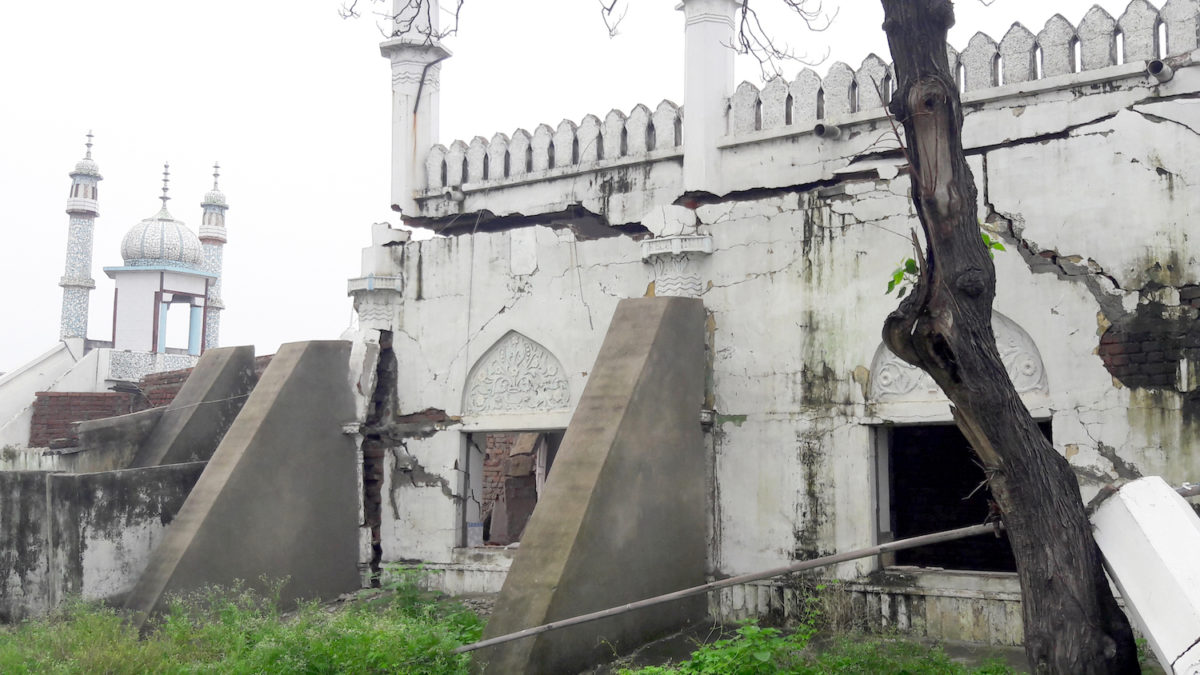
The 280-square-kilometer (110-square-mile) coalfields have been mined since 1894 — first by British companies, then by a succession of Gujarati, Rajasthani and Bengali firms. In 1972, as part of a countrywide nationalization of coking coal mines, production at the Jharia coalfields was taken over by Bharat Coking Coal Limited (BCCL), a subsidiary unit of government-owned Coal India Limited (CIL).
The company inherited a legacy of more than 70 mine fires, covering an area of 17.32 square kilometers (6.68 square miles).
The first of these fires was detected in 1916, in the Bhowrah area of the coalfield. In the early days of the mine, coal was extracted using a primitive method that left behind pillars of coal to support shallow mining tunnels, explained Arun Kumar Charanpahari, former general manager (mining) at CIL. Eventually, some of these pillars collapsed, creating subsidence and surface cracks that allowed atmospheric oxygen to enter the mine and react with exposed lumps of coal. With insufficient ventilation in these tunnels, heat gradually built up, igniting and spreading coal seam fires.
Spurred on by soaring profits, a succession of owners and operators have nonetheless continued to extract coal. At present, 44 mines are operating in the area, producing 35.86 million tonnes of coal in the last financial year.

Fighting the fire
Various attempts have been made to contain the fire while still carrying out coal production. Mine officials have attempted to isolate the fires by trenching, digging out burning coal or smothering flames with sand, soil or inert gasses. By 1996, the surface area affected by fires was reduced to 8.9 square kilometers (3.43 square miles). At present, the fire-affected area has been reduced to 2.18 square kilometers (0.84 square miles), according to Debal Gangopadhyay, director (technical) of BCCL.
However, such figures and statements mean little for the residents of affected villages like Baesbarah. “The area near our village has a known history of mine fires,” said Mohammad Naushad. “BCCL carried out mining operations here in the 1970 and ’80s, but work had to be stopped because of the fire. However, the company then ensured our safety by digging deep trenches to separate our village from the fire.”
Between 2008 and 2009, BCCL outsourced coal production to a private company and the mines were reopened, the villagers said. This stoked the already existing fire. Then, the fiery rubble extracted from the mine was dumped in the trench cutting across the village. “Mining operations have been discontinued (about 3-4 years ago) but our existence in the village has been imperiled,” said Naushad.
Now, villagers like Manir and Naushad — who have lived there for decades and claim to hold legal title deeds to the land — have no choice but to relocate.
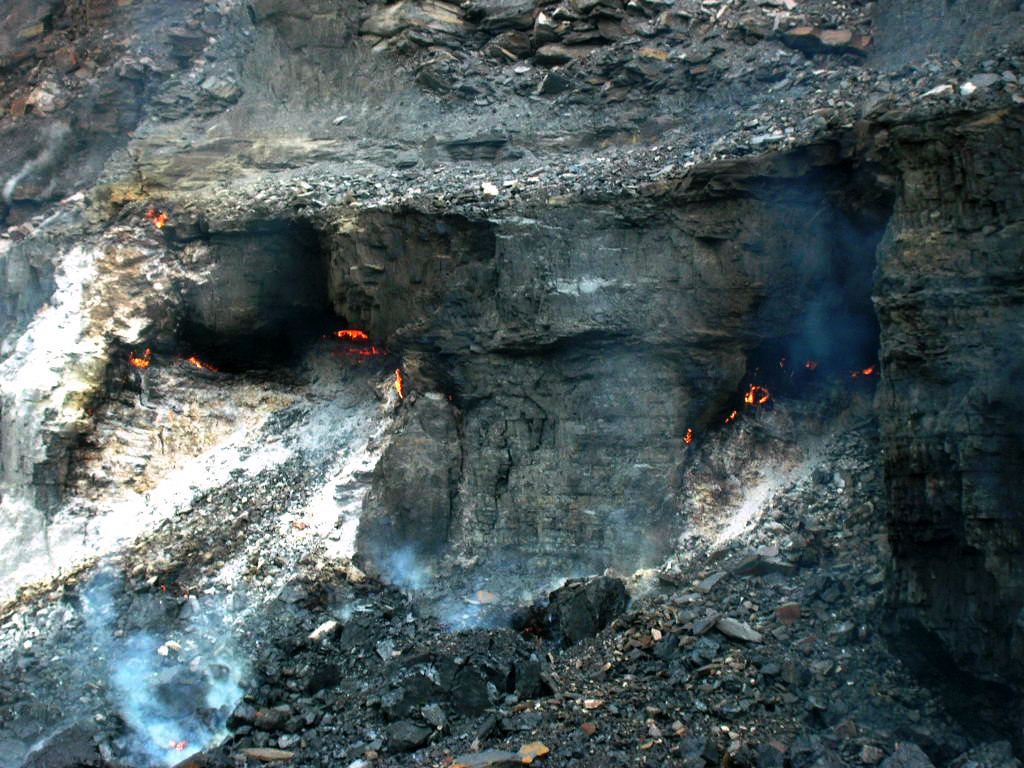
A state-government-run agency was set up in 2004 to manage the resettlement of non-BCCL personnel living in affected areas: the Jharia Rehabilitation and Development Authority (JRDA). The JRDA is partly funded through a levy of 10 rupees per tonne of coal sold by BCCL, which is set aside for the rehabilitation of fire affected victims. This generates about 3 billion rupees (about $45 million) per annum, part of which is paid to the JRDA. During the last three years 5 billion rupees (around $75 million) has been transferred to the agency, Gangopadhyay said.
Despite this pool of funding, the JRDA has faced numerous problems in organizing resettlement, particularly when it comes to procuring land to build houses on. In Baesbarah, traditional land owners have protested because the houses being constructed by the JDRA for resettlement do not suit them. Most of the villagers live in extended family homes with multiple rooms; for JRDA, finding land to build even the prescribed norm of a two-room house per family is a challenging task.
Adding to the JRDA’s difficulties, the number of fire-affected families has almost doubled since the 2008 master plan was created. “From the given target of 54,159 of non-BCCL employees as per the 2008 master plan, the figures today have exceeded [100,000] families,” said Vijay Kumar Gupta, officer-in-charge of JRDA. He said 2,103 families have so far been allotted homes in Belgharia — the upcoming relocation site — 1,566 of whom have already moved. By the end of 2017, he said he hopes at least 10,000 two-roomed new homes will be ready for occupation.
In other areas, relocation is going less smoothly. Gupta admitted the agency is facing problems with land acquisition. In Lipania, a non-coal-bearing site selected for relocation, they are locked in controversies and disputes with the land owners, he said.
Efforts by the coal company to relocate the families of its workers are also underway. According to official data from BCCL’s Gangopadhyay, 6,500 families of its employees have already been shifted to safer areas as of 2016. By 2021, the company aims to relocate 15,000 families.
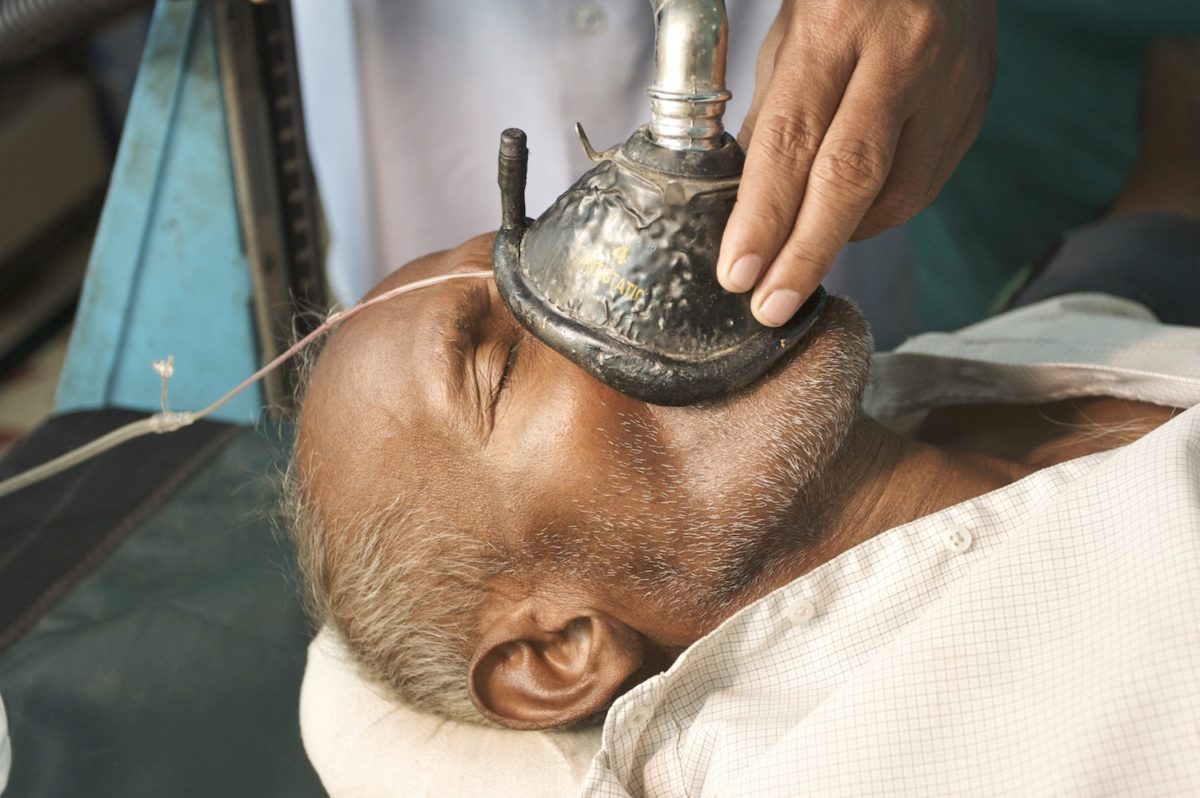
Health impacts
“Large goaves (hollows) have appeared in our village, belching out fire and smoke,” said Rajkishore Singh, a resident of the Dobari Khaad Village in the Bastacola Area. “The latest of these occurred about a fortnight ago, just 14 feet, 15 feet away from our homes. Two cows of my neighbor also perished in one of these incidents.” The mine management offered to fill up the goaves, but villagers resisted, fearing that this would make their land even more vulnerable to subsidence.
In addition to the hazards of fire, people in villages like Dobari Khaad, which is adjacent to an open cast mine, face a host of health problems. “Mining operations raise huge dust, coal particles and stones — there is coal powder in the food we eat, all over our clothes, in our eyes and throats,” said resident Ajay Kumar.
On average, the life expectancy of people living near the Jharia coalfields is reduced by at least ten years, said Om Prakash Agarwal, founder of Life Line Hospital in Jharia.
The biggest culprit is airborne particulate matter (PM), which is largely associated with mining, storing and transporting coal, explained Biswajit Paul, an associate professor at the Centre of Mining Environment of Indian School of Mines, Dhanbad — the oldest institute of its kind in the country.
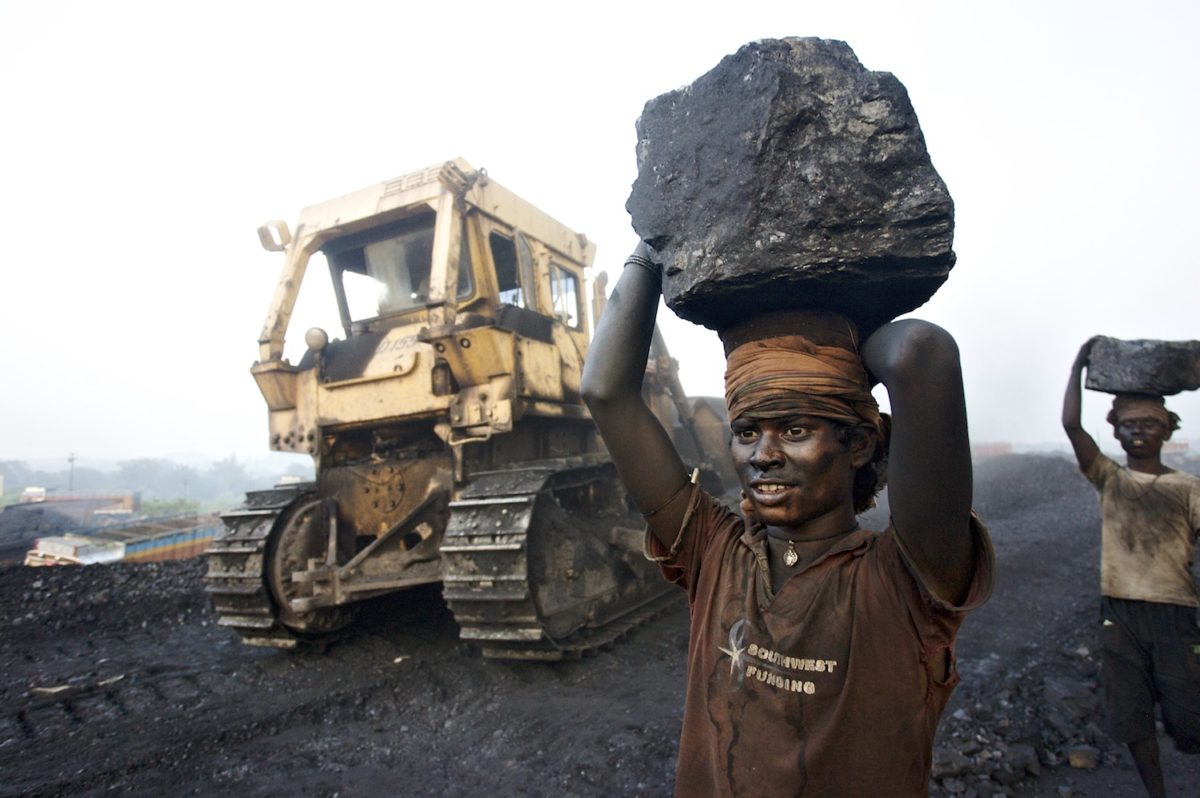
According to Paul, high levels of both PM10 and the finer and even more dangerous PM2.5 are fairly high in the coal belt. The average concentration of PM10 has been found to exceed India’s air quality standards by three to four times, he said. PM2.5 levels are also elevated, exceeding national standards by as much as 66 percent, a problem made worse by automobile emissions and the transport of uncovered coal.
Oxides of sulfur, nitrogen and carbon released by coal fires further pollute the ambient air.
Together, these pollutants result in chronic respiratory diseases like bronchitis and asthma. Their incidences are at least 35 – 40 percent higher in the coal-belt than in other parts of the country, said Agarwal. Patients frequently arrive at his hospital with symptoms of pneumoconiosis — a disease caused by the accumulation of fine dust particles (of the order of PM2.5) in the lungs. Coal miners in particular may develop anthracosis, also known as Black Lung Disease, resulting from deposits of minute coal dust in the lungs. Such ailments, Agarwal added, can even lead to lung cancer.
Diseases like Hepatitis and other gastrointestinal problems also occur due to water pollution caused by the discharge of mine water and other waste in local waterways.
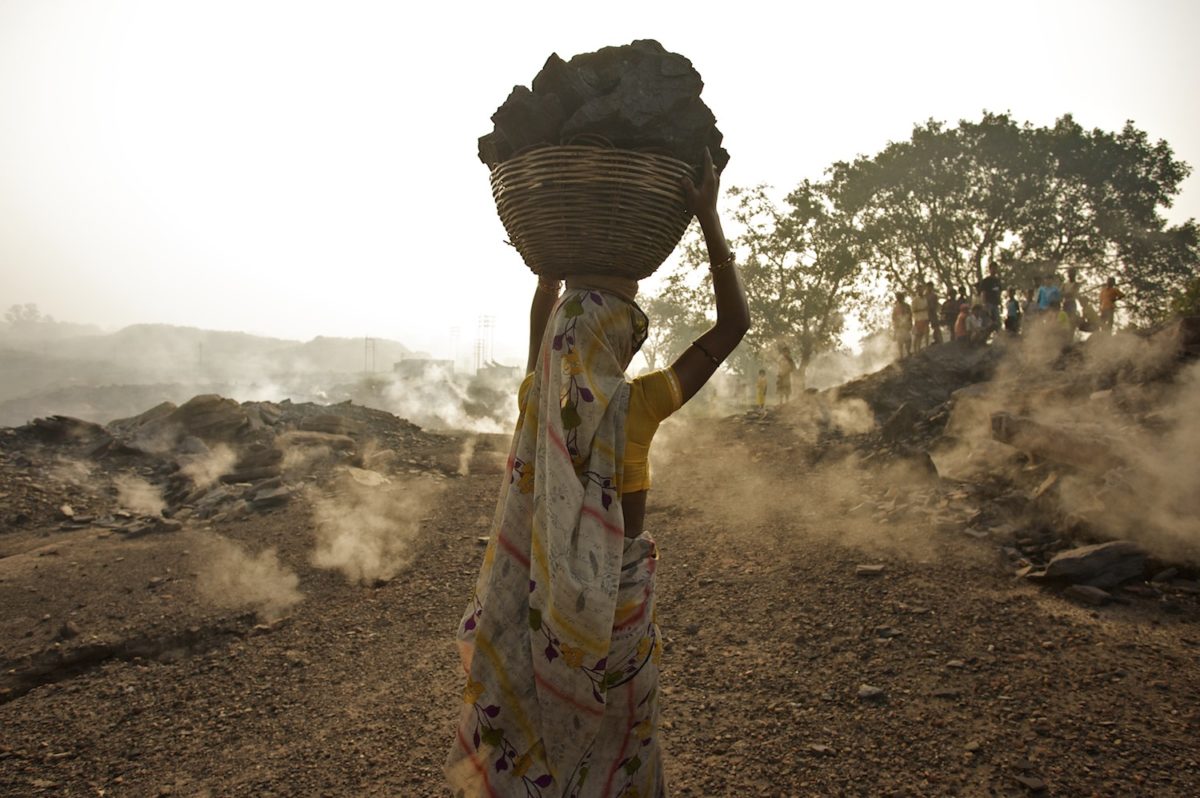
Even as troubles continue to mount regarding the safety and welfare of coal belt denizens, environmentalists have not given up hope. Simple solutions could help reduce the health impacts of the mine, said the Indian School of Mines’ Paul. “One effective way is to capture the dust at its generation point, to minimize its propagation in the ambient air,” he said. Paul also advocates for the compulsory use of dust extractors for trapping dust. At present, he said, most extractors are lying defunct, due to lack of maintenance.
New technologies like mist sprays for prolonged and effective dust control should also be adopted, Paul said. Even simple preventative measures make a big difference: sprinkling water on coal-laden trucks traveling short distances, or covering long-haul coal trucks with tarpaulins, can help reduce the spread of coal dust.
According to BCCL Technical Director Gangopadhyay, such measures are already being put in place. A “Rapid Loading System” of closed-circuit silos is being built at one of the company’s railway sidings, and two more have been proposed. This will not only speed up the loading process but also stop dust from going to the surrounding air, he said. The company is also procuring fifteen mist sprinklers to reduce particulate concentration.
Efforts are also on to process the abundantly available but polluted mine water. Pradeep Kumar Singh, director of the Central Institute of Mining & Fuel Research (CIMFR) and Kalendra Bahadur Singh, chief scientist at Natural Resources & Environmental Management have developed a pilot project to convert waste mine water for drinking. It comprises a reverse osmosis filtration plant that can purify 4,000 liters of mine wastewater per hour. It was handed over to BCCL in November 2014 and installed in its office at Putki Balihari area. Since then, with a capacity of 40,000 liters per day, it is providing drinking water for 4,050 people, said the scientists from CIMFR. The project is expected to be replicated in other subsidiaries of CIL.
Soil that has been degraded by mining operations is also being taken care of by the coal company. BCCL has set an example by growing three-tier forest cover on its bare overburden dumps. “We have covered about 204 hectares since 2011 and hope to cover 40 hectares in 2017-18,” said Gangopadhyay. In association with the local Forest Department, the company is also working on a target of establishing 100,000 tree plantations along the roads of the coal belt between 2016-2021.
“We are not just extracting coal from the face of earth, but also greening the black rock and trying to reduce carbon footprints for our future generations,” he said. Meanwhile, the present residents of the Jharia coalfields, who are currently bearing the brunt of the mine fire, hope to see benefits like better health and livelihood options in their own lifetimes.
FEEDBACK: Use this form to send a message to the author of this post. If you want to post a public comment, you can do that at the bottom of the page.